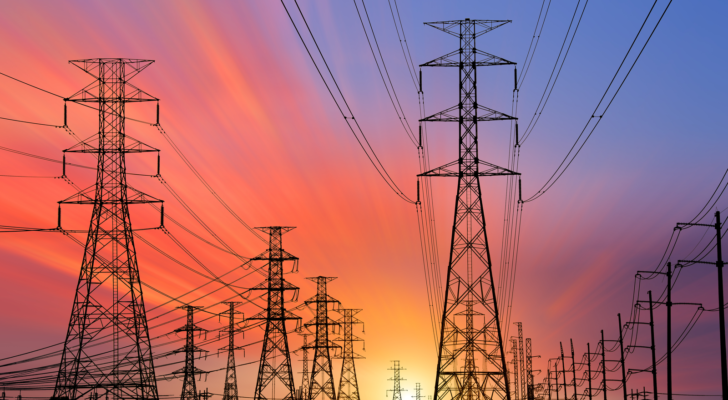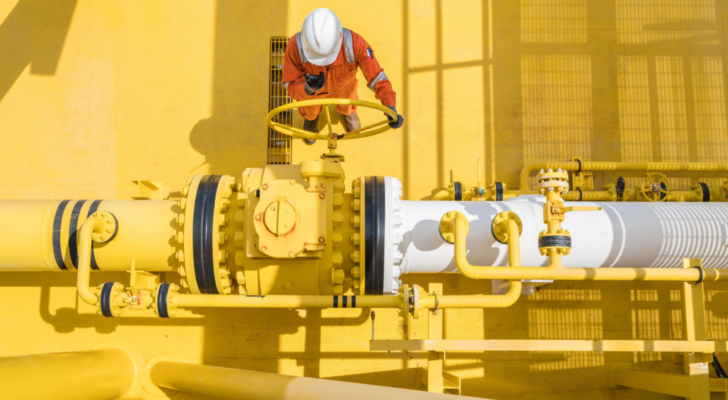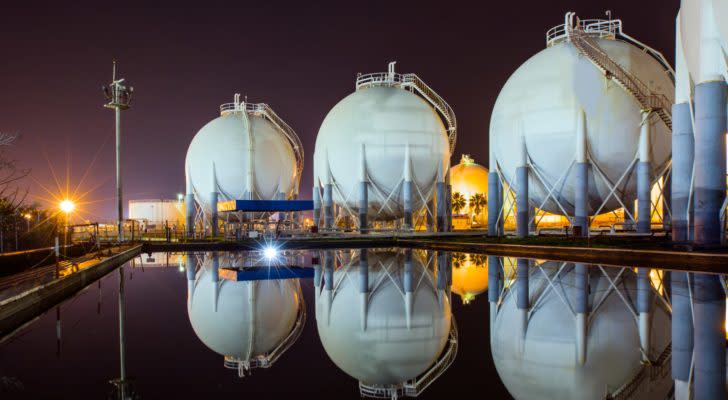3 Utilities Stocks Yielding 5% for Income Investors
The utilities sector performed poorly in 2023 because of rising share prices. The negative sentiment has continued in 2024. As a result, many utilities share prices have fallen, but the yields have reached decade highs. Also, valuations are depressed compared to their historical averages and the S&P 500.
This combination means investors can purchase shares of income stocks trading at reduced valuations. The sector is sensitive to interest rates, so when they decline, valuations should rise and yields come down. However, now is an excellent time to lock in utilities that are still growing earnings and dividend payouts.
NorthWestern Energy Group (NWE)

Source: Pand P Studio / Shutterstock.com
NorthWestern Energy Group (NASDAQ:NWE) is a 100-year-old electricity and natural gas utility. The company operates in Montana, South Dakota, Nebraska and Yellowstone National Park, providing services to more than 764,000 customers. The utility reorganized to separate its regulated subsidiaries in South Dakota and Montana and unregulated assets in Nebraska. Total revenue was $1.4 billion in 2023.
InvestorPlace - Stock Market News, Stock Advice & Trading Tips
Like all utilities, NorthWestern increases its earnings per share (EPS) by growing its rate base. The utility targets a 4% to 6% annual increase driven by capital investment. It has a $2.5 billion five-year capital expenditure plan to increase electricity generation, transmission, and distribution, and natural gas transmission and distribution. The firm should also add to the top and bottom lines through population growth and rate cases with its regulators. Currently, both states’ populations are rising about 1% to 1.5% annually contributing to growth.
However, a risk for NorthWestern is its dependence on contracted power. The regulated utilities are addressing the issue by completing a 58-megawatt natural gas generating station and building a 175 MW plant to start operation in 2024. They are also buying the Colstrip coal power plant, adding 222 MW of capacity in 2025.
The forward dividend yield is 5.3%, nearly the highest value in a decade and a whole percentage point above the five-year average. Like most utilities, NorthWestern’s share price has declined because of high yields on short-term U.S. Treasurys. Additionally, it has a 20-year dividend growth streak and is on the list of Dividend Contenders.
NorthWestern typically increases the dividend between 1.5% and 5% annually in the last five years because of the lofty payout ratio of about 78%. However, dividend safety is high because of stable revenue, earnings, and free cash flow resulting from its regulated utilities. The safety is enhanced by the lower-medium investment grade credit ratings from the three leading agencies.
The equity is only trading at an earnings multiple of 13.9x, below the five-year and 10-year ranges. Investors seeking income at a reasonable price should look here.
Black Hills Corporation (BKH)

Source: Oil and Gas Photographer / Shutterstock.com
Black Hills Corporation (NYSE:BKH) is another regulated Great Plains electricity and natural gas utility. It provides electricity to about 222,000 customers in Colorado, Montana, South Dakota and Wyoming. In addition, it distributes natural gas to approximately 1,116,000 customers in Arkansas, Colorado, Iowa, Kansas, Nebraska and Wyoming. Total revenue was $2.3 billion in 2023.
The utility has a long-term EPS growth target of 4% to 6% annually, driven by a planned $4.3 billion in capital investments over the next five years to increase the rate base. The firm’s expansive geographic footprint means it must face regulatory hurdles in multiple states. However, Black Hills has seemingly been successful and is currently pursuing rate reviews in multiple states. This should help drive growth.
Higher interest rates have caused the dividend yield to surge to about 5%, 1.5 percentage points above the five-year average. Moreover, the yield is almost at a decade high. The dividend growth rate is roughly 5% per annum, the midpoint of the EPS growth. Black Hills targets a 55% to 65% payout ratio, meaning safety is excellent. As a result, the utility should extend its 54-year streak of increases and maintain its Dividend King status.
The excellent dividend safety is enhanced by the A dividend quality grade from Portfolio Insight. It also has a BBB+/Baa2 lower-medium investment credit rating, giving greater confidence about safety.
In addition to the solid yield, dividend growth and long history of paying a dividend, Black Hills is significantly undervalued. The forward price-to-earnings (P/E) ratio is about 12.1x, well below the five-year and 10-year ranges.
Spire (SR)

Source: Shutterstock
Spire (NYSE:SR) is a natural gas utility tracing its history to 1857. The firm has both regulated and unregulated businesses. The regulated utilities operate in Missouri, Mississippi and Alabama, serving 1.7 million customers. Additionally, the company has natural gas storage facilities in Oklahoma and Wyoming and owns the MoGas and Omega pipelines in Missouri. Total revenue was $2.6 billion in the last 12 months.
The utility is spending around $7.2 billion over the next decade in its capital investment plan. The plan is centered on infrastructure upgrades and new business. The expenditures should drive 7% to 8% rate base growth, resulting in 5% to 7% EPS growth after 2024. Besides capital improvements, Spire conducts periodic rate reviews to increase income. On the unregulated side, the company is spending to expand its storage capacity and acquire pipelines.
Spire has paid a rising dividend for 21 years, making it a Dividend Contender. The yield has risen to about 5.1%, well above the five-year average. The firm has increased the dividend by about 5% per year on average in the trailing five and ten years. However, the payout ratio is about 72%, meaning the growth rate may be lower in the near future.
The forward P/E ratio is about 13.7x, making the equity a bargain considering the dividend yield.
On the date of publication, Prakash Kolli held a LONG position in NWE and SR. The opinions expressed in this article are those of the writer, subject to the InvestorPlace.com Publishing Guidelines.
Prakash Kolli is the founder of the Dividend Power site. He is a self-taught investor and blogger on dividend growth stocks and financial independence. Some of his writings can be found on Seeking Alpha, InvestorPlace, TalkMarkets, ValueWalk, The Money Show, Forbes, Yahoo Finance, FXMag, and leading financial blogs. He also works as a part-time freelance equity analyst with a leading newsletter on dividend stocks. He was recently in the top 1.0% and 100 (81 out of over 9,459) of financial bloggers as tracked by TipRanks (an independent analyst tracking site) for his articles on Seeking Alpha.
More From InvestorPlace
ChatGPT IPO Could Shock the World, Make This Move Before the Announcement
Musk’s “Project Omega” May Be Set to Mint New Millionaires. Here’s How to Get In.
It doesn’t matter if you have $500 or $5 million. Do this now.
The post 3 Utilities Stocks Yielding 5% for Income Investors appeared first on InvestorPlace.
